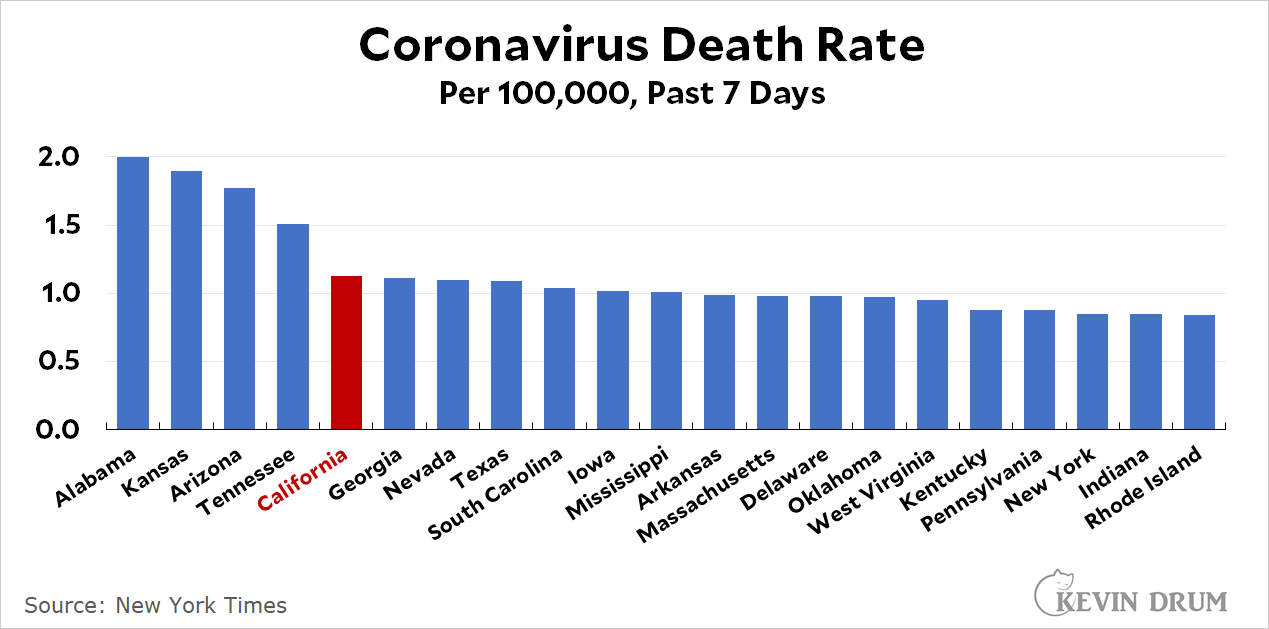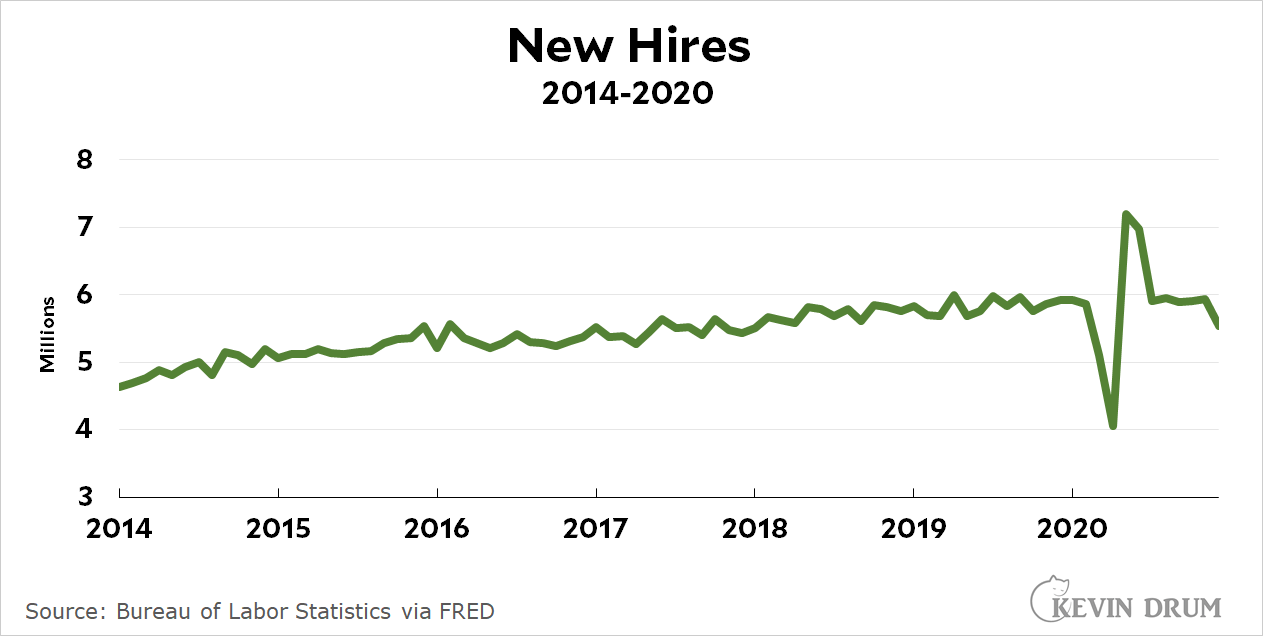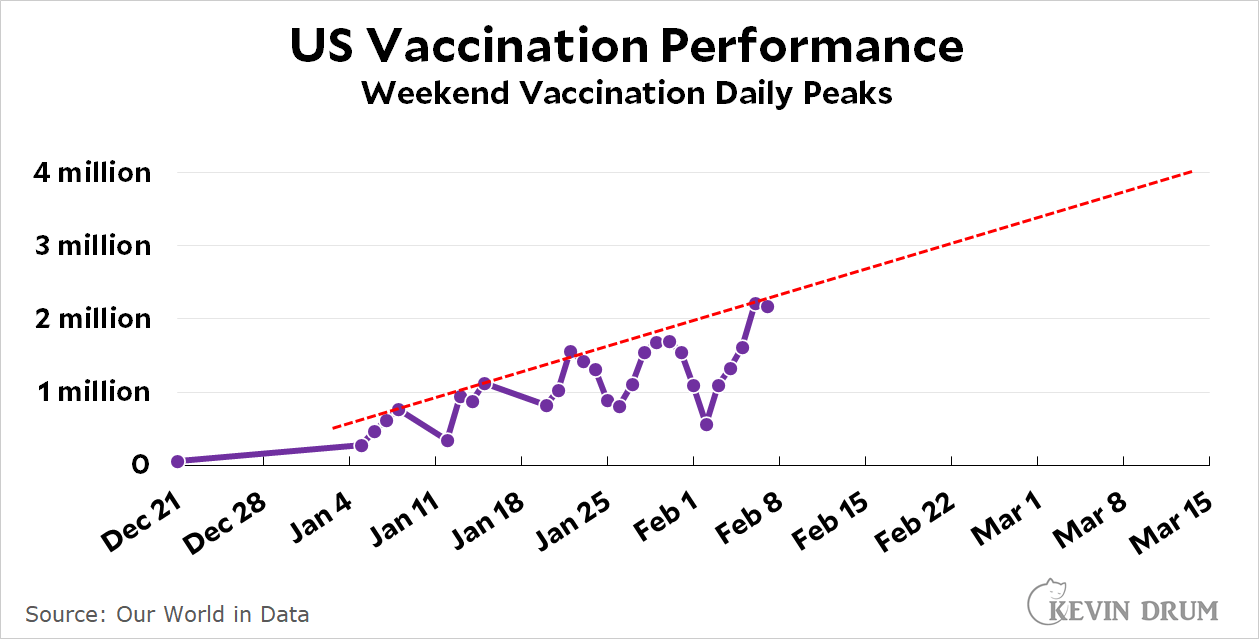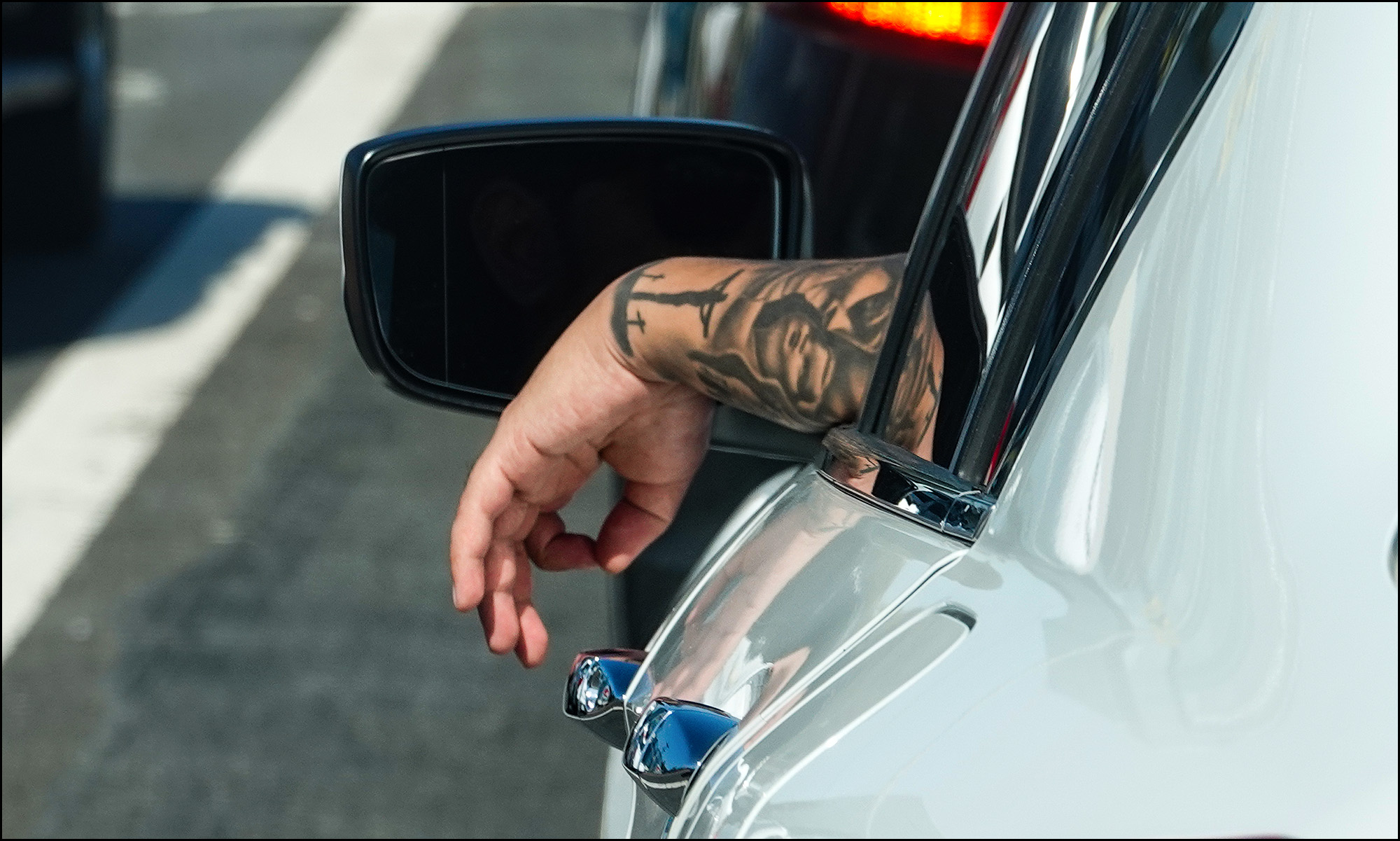Over at Vox, Sean Illing interviews Lawrence Wright, author of a long and detailed piece in the New Yorker about our response to the coronavirus pandemic. Wright says we did a terrible job and points in particular to three big mistakes. Here they are:
- The CDC fails to get cooperation from the Chinese, thus delaying our knowledge that the virus could be transmitted asymptomatically.
- CDC bungles the testing.
- CDC spends a couple of months telling people not to wear masks.
The first of these is basically the fault of China. The other two are the fault of the CDC. None of them are the fault of Donald Trump.
Now, Trump clearly deserves a share of blame on the mask debacle, since he failed to support mask wearing after the CDC finally came around. In fact, it's worse than that. He didn't just fail to do anything, he actively turned masks into a stupid partisan issue:
You can look at the various states and how they reacted to the virus and how the outcomes were different. And you can compare similar states; Kentucky and Tennessee, Alabama and Mississippi, Vermont and South Dakota. In many respects, these were similar states with similar demographics. In one case, the governor imposes strict lockdowns, mask wearing, and so on. In another case, the tap is open. One public health official said, “If the country had behaved like the state of Vermont, we would have 200,000 fewer deaths.” Well, that’s almost half of what we’re talking about. More responsible leadership could have made an immense difference in the suffering and the death that America has endured.
Keep in mind, however, that the decision to lock down a state isn't a federal one. It's inherently a state issue. And the idea that the entire country might have equaled the performance of its single best state is silly. Trump may have bollixed the mask issue and then spent months doing and saying stupid things, but California spent that entire time basically doing everything right and it didn't matter. We did well at first, but our death rate from the coronavirus is currently one of the highest in the nation.
 So how many deaths is Donald Trump responsible for? It's certainly not 200,000. Even 100,000 is probably a huge overestimate. If I had to guess based on what Wright says, I'd say that (a) Trump acted like a buffoon the whole time, (b) he made things worse by spewing stupid theories constantly, (c) he failed to support mask wearing, and (d) in concrete terms, maybe this increased the death rate 5-10%.
So how many deaths is Donald Trump responsible for? It's certainly not 200,000. Even 100,000 is probably a huge overestimate. If I had to guess based on what Wright says, I'd say that (a) Trump acted like a buffoon the whole time, (b) he made things worse by spewing stupid theories constantly, (c) he failed to support mask wearing, and (d) in concrete terms, maybe this increased the death rate 5-10%.
Obviously this is speculative. No one can put a firm number to any of it. But for as much as Trump's public performance was insane, the evidence really doesn't suggest that it was responsible for a massive increase in the COVID-19 mortality rate. That blame mostly goes elsewhere.


 As you can see, average folks have a noticeably higher chance of ending up at the worst economics programs, while attractive people have a higher chance of ending up at the very best. The authors say these effects are "not only statistically significant but are also substantial in magnitude."
As you can see, average folks have a noticeably higher chance of ending up at the worst economics programs, while attractive people have a higher chance of ending up at the very best. The authors say these effects are "not only statistically significant but are also substantial in magnitude."
 Job openings didn't change much in December. Quits didn't change much. Layoffs didn't change much. But new hires dropped by 400,000. With the exception of the spikes during the first few months of the pandemic, this is the biggest drop in the past seven years. The declines were almost entirely due to big drops in the leisure, food services, and recreation industries.
Job openings didn't change much in December. Quits didn't change much. Layoffs didn't change much. But new hires dropped by 400,000. With the exception of the spikes during the first few months of the pandemic, this is the biggest drop in the past seven years. The declines were almost entirely due to big drops in the leisure, food services, and recreation industries.

 A couple of years ago I finally gave up on this: It was obvious there was no hope for an adequate global response in anywhere close to the necessary time frame. I now believe that our only option is to invest massive amounts of money in technology solutions, hoping against hope that enough of them succeed to reverse warming before it destroys the planet. You can read all about that
A couple of years ago I finally gave up on this: It was obvious there was no hope for an adequate global response in anywhere close to the necessary time frame. I now believe that our only option is to invest massive amounts of money in technology solutions, hoping against hope that enough of them succeed to reverse warming before it destroys the planet. You can read all about that